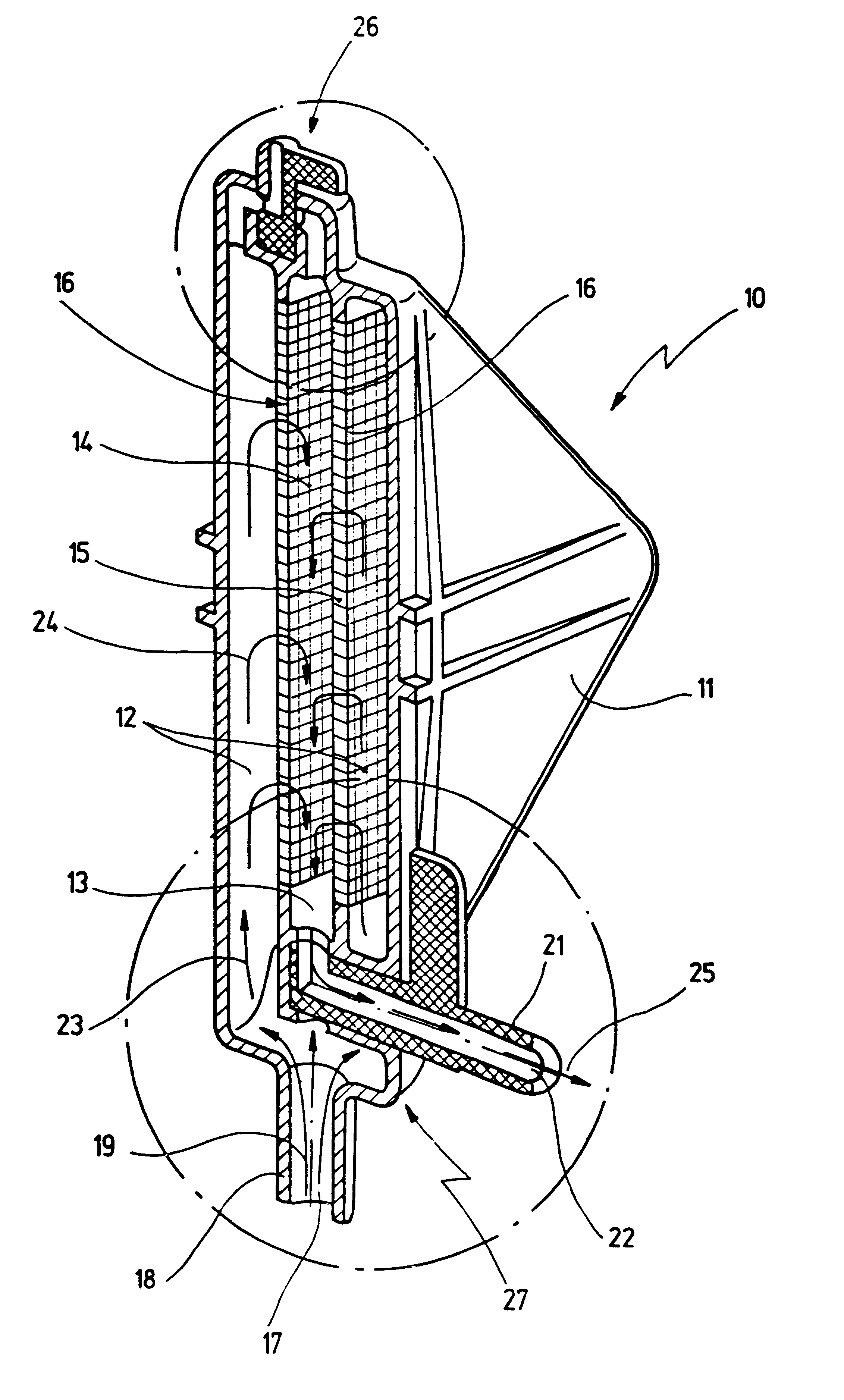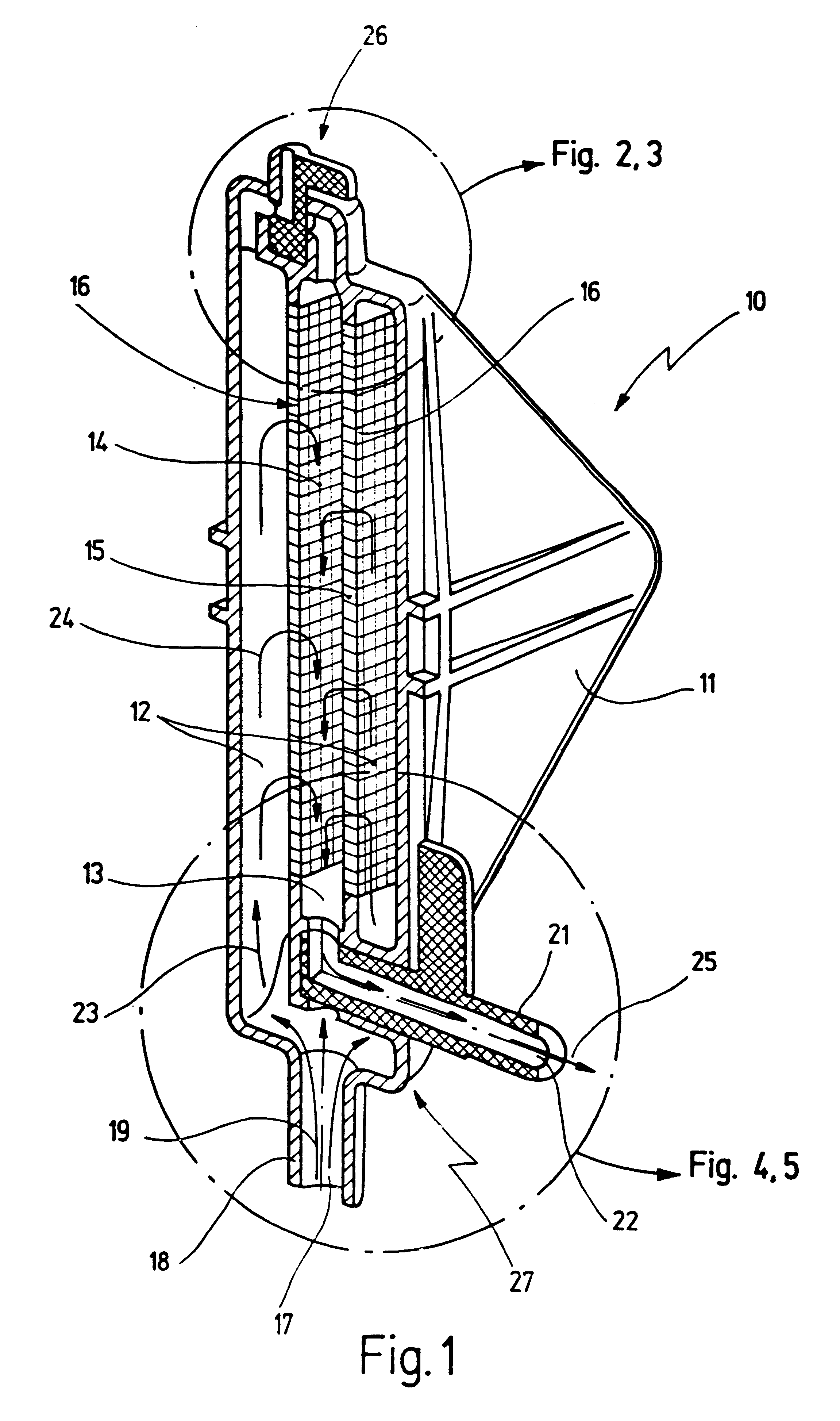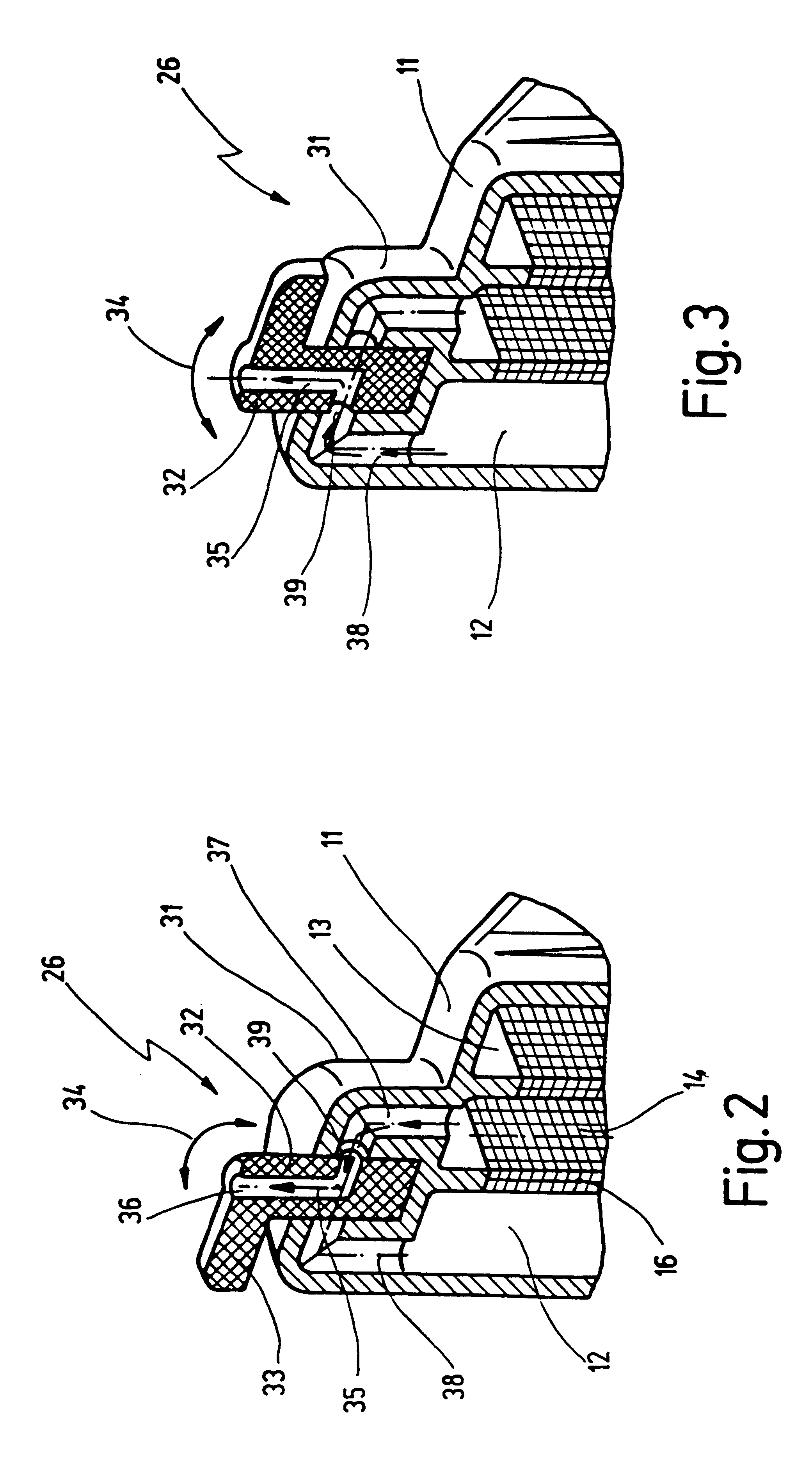Apparatus for filtering and degassing body fluids, in particular blood filter
a technology of filtering apparatus and body fluid, which is applied in the direction of liquid degasification, water/sewage treatment by degassing, separation process, etc., can solve the problems of undesirable reduction in the volumetric flow of filtered whole blood, inability to adjust the pressure, and accumulation of retained constituents in the filter
- Summary
- Abstract
- Description
- Claims
- Application Information
AI Technical Summary
Benefits of technology
Problems solved by technology
Method used
Image
Examples
Embodiment Construction
FIG. 1 shows, in a perspective longitudinal section, an apparatus 10 for filtering and degassing body fluid, which in the selected embodiment is a blood filter. Apparatus 10 is configured as a dead-end filter, so that (in contrast to crossflow filters) blood loss during use is avoided.
Apparatus 10 comprises a prismatic housing 11 in which a first filter chamber 12 and a second filter chamber 13 are arranged.
Second filter chamber 13 is delimited by two side walls 14, 15, respectively fitted with a filter medium 16 that separates first filter chamber 12 from second filter chamber 13.
At its point that is lowest in the operating position shown in FIG. 1, apparatus 10 has an inlet 17 at an inflow connector 18, through which a body fluid flow indicated at 19 passes into first filter chamber 12. Located directly adjacent to inflow connector 19 is an outflow connector 21 with an outlet 22.
Body fluid flow 19 passing into apparatus 10 rises upward in first filter chamber 12, as indicated by a...
PUM
| Property | Measurement | Unit |
|---|---|---|
| Flow rate | aaaaa | aaaaa |
| Shape | aaaaa | aaaaa |
Abstract
Description
Claims
Application Information
 Login to View More
Login to View More - R&D
- Intellectual Property
- Life Sciences
- Materials
- Tech Scout
- Unparalleled Data Quality
- Higher Quality Content
- 60% Fewer Hallucinations
Browse by: Latest US Patents, China's latest patents, Technical Efficacy Thesaurus, Application Domain, Technology Topic, Popular Technical Reports.
© 2025 PatSnap. All rights reserved.Legal|Privacy policy|Modern Slavery Act Transparency Statement|Sitemap|About US| Contact US: help@patsnap.com



